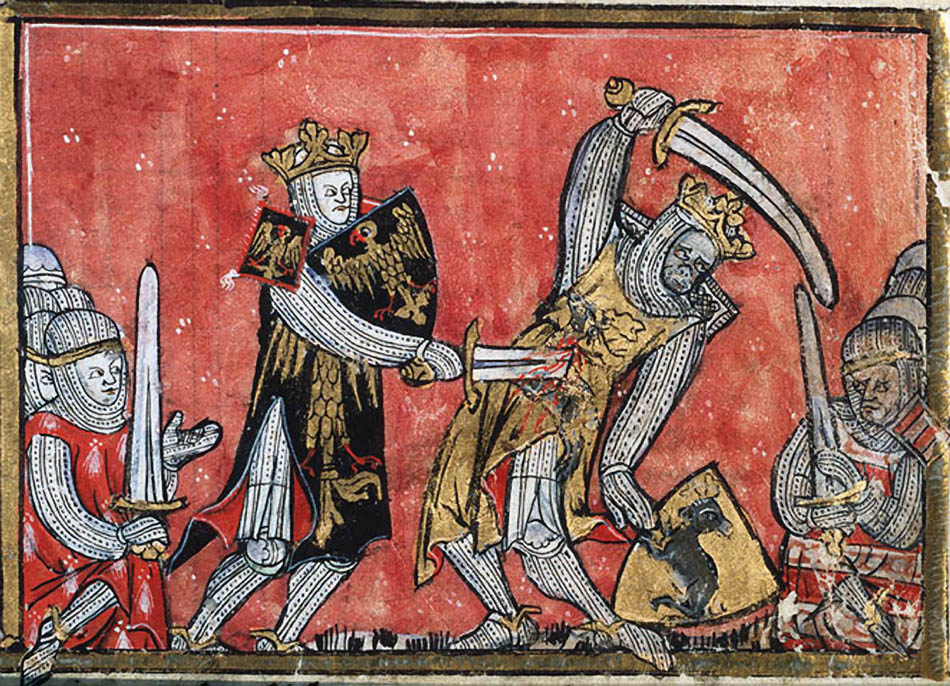The Last Single Combat? November 15, 2013
Author: Beach Combing | in : Ancient, Medieval, Modern , trackbackSingle Combat is not strictly the same as a duel, where two individuals meet to settle a matter of honour. In single combat a member of one army and a member from another meet before battle, either to warm up the ranks or, better still, to settle the affair pacifically without any one else having to get blood on their new uniforms. Famous ancient examples include Marcus Valerius Corvus who fought a Gaul before battle, when a raven or crow famously landed on Marcus’ head; and, of course, there is also David and Goliath, who agree to settle their differences before the crunch. If this seems to have been fairly common practice in antiquity – though most references we’ve found are literary – how long did single combat on the ground (no flying Red Barons) survive into modern times? The problem is, of course, that as armies concentrate on bolting shields together and aligning pikes perfectly soldiers come to care more about victory than entertainment.
There are a cluster of late sixteenth-century examples. For instance, John Smith (obit 1579), English explorer and sometime friend of Pocahontas claimed that, as a young man, he had killed Turks in single combat. But John Smith is a rather unreliable narrator, to say the very least. More believable (just) is the claim by Ben Johnson that, at the end of the sixteenth century, c. 1582, he had fought a Spaniard in front of two armies in the Lowlands and stripped his slain opponent. But would you trust a poet let alone a dramatist? Perhaps the best case we’ve come across is Irish. Sir John Perrot (obit 1592) and James Fitz Moris (aka James Fitzmaurice Fitzgerald (obit 1579) in the dreadful late sixteenth-century campaigns in Munster (1570-) came close to settling matters with arms. James suggested to John that they meet with fifty of their retainers and fight it out on horseback: in the middle ages single combat had survived, above all, among knights. James then scaled back the fight to a one-on-one rumble from which he sensibly absconded by sending note that ‘If I should kill Sir John Perrot, the queene of England can send another President into this province; but if he do kyll me, there is none other to succeede me, or to command as I doe.’ No wonder the tradition of single combat was coming to an end.
However, with these vague or unsuccessful late sixteenth century example, Beach remains hopeful. Surely somewhere in the eighteenth or nineteenth century, someone shouted across to the enemy lines before combat? Perhaps there was even a freaky case of single-combatitis from the trenches in the First World War? Drbeachcombing AT yahoo DOT com



